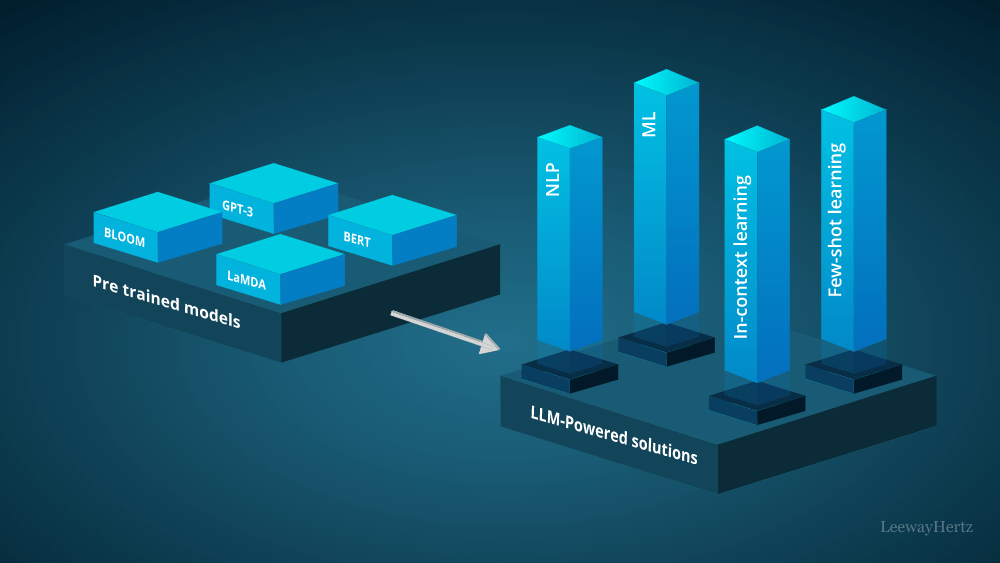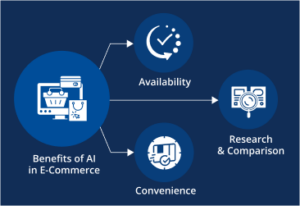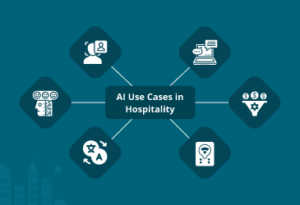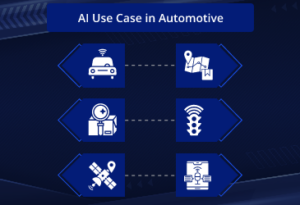How to use LLMs for creating a content-based recommendation system for entertainment platforms?
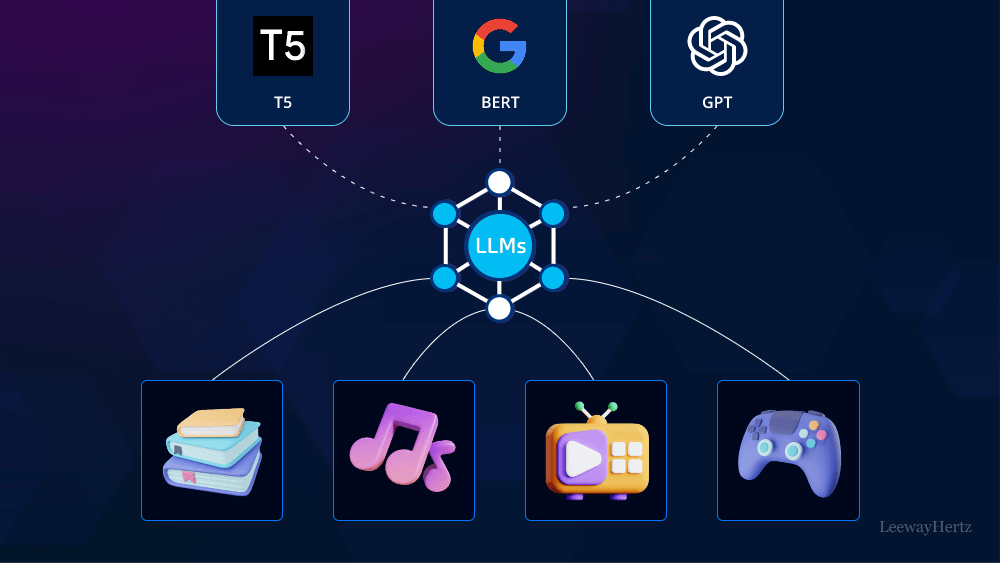
In today’s digital age, entertainment platforms are flooded with overwhelming content – from movies and TV shows to music and books. With this abundance of options, users often struggle to discover content that aligns with their preferences. This is where recommendation systems come into play, enhancing user experiences by suggesting personalized content.
Content-based recommendation systems analyze item features and user preferences to make relevant suggestions. Traditionally, these systems relied on metadata (such as genre, director, or release year) to match items. However, recent natural language processing (NLP) advancements have opened up exciting possibilities for improving content-based recommendations.
Enter Large Language Models (LLMs) for recommendation systems, such as BERT and GPT-4. These pre-trained NLP models have transformed various tasks, including text generation, sentiment analysis, and machine translation. Now, they are poised to transform recommendation systems by extracting meaningful features from textual content.
In this article, we delve into the world of LLMs and explore how they can be harnessed to create powerful content-based recommendation systems for entertainment platforms. From data preparation to model fine-tuning, we’ll guide you through the entire process, emphasizing accuracy and explainability. If you are curious about the magic behind personalized recommendations, let’s dive into the world of LLMs and how users discover their next favorite movie, song, or book.
- What is a content-based recommendation system for entertainment platforms?
- Why content-based recommendation systems for entertainment platforms?
- How content-based recommendation system differ from other approaches?
- Significance of content-based recommendation systems for entertainment platforms
- Exploring LLMs in content-based recommendation systems for entertainment platforms
- How LLMs are transforming content-based recommendation systems in entertainment platforms?
- How to use LLMs for creating content-based recommendation systems for entertainment platforms?
- Evaluation considerations for entertainment recommendation systems
- Enhancing Entertainment Platforms with LLM-Driven Content-Based Recommendation Systems
- Future trends for LLMs in entertainment recommendation systems
- Benefits of LLMs in content-based recommender systems
- LeewayHertz’s expertise in entertainment recommendation systems
What is a content-based recommendation system for entertainment platforms?
In the vast landscape of entertainment platforms, including streaming services, music applications, and online bookstores, users are constantly on a quest to find content tailored to their individual tastes. Whether it involves uncovering a new cinematic gem, discovering the perfect melody, or selecting an enthralling novel, the significance of personalized recommendations cannot be overstated. In this context, content-based recommendation systems stand out as a key player in shaping user satisfaction. Let’s dive into more technical details.
What are content-based recommendation systems?
Content-based recommendation systems leverage the intrinsic features of items (such as movies, songs, or books) to make personalized suggestions. Unlike collaborative filtering methods that rely on user-item interactions, content-based approaches analyze the characteristics of items themselves.
Here’s how content-based recommendation systems for entertainment platforms work:
Item profiles: Each item, for example, a movie, is represented by a set of features or attributes. These can range from genre and director to cast, release year, and textual descriptions such as plot summaries or user reviews.
For example, a movie’s item profile might include information like “Action,” “Christopher Nolan,” “Leonardo DiCaprio,” and “Inception (2010).”
User profiles: User profiles are detailed representations of individuals’ preferences and actions within a system. These are crafted from users’ past interactions with items and are continuously updated to reflect evolving preferences. These profiles consist of features like genre preferences, historical ratings, and favorite artists. They enable personalized recommendations by analyzing users’ unique preferences alongside item characteristics. User profiles adapt to new interactions and prioritize privacy and data security.
Matching items to user profiles: The recommendation engine orchestrates by comparing the features of items (item profiles) with the user’s preferences (user profile). If an item’s features align with the user’s interests, it earns a spot as a candidate for recommendation. So the flow is like this:
- The recommendation engine compares the features of items (item profiles) with the user’s preferences (user profile).
- If an item’s features align with the user’s interests, it becomes a candidate for recommendation.
Scoring and ranking: Each item undergoes a scoring process based on its similarity to the user’s profile. The system then ranks items by score, presenting the top recommendations to the user.
- Each item receives a score based on its similarity to the user’s profile.
- The system ranks items by their scores and presents the top recommendations to the user.
Why content-based recommendation systems for entertainment platforms?
Why are content-based recommendation systems a preferred choice for entertainment platforms? Explore these three key points.
No cold start problem
Content-based recommendation systems possess a unique capability – the proficiency to offer personalized suggestions to new users who haven’t engaged with any items. Unlike collaborative filtering, which struggles with the cold start problem, content-based systems leverage item features, making them well-suited for users with no historical interactions. Since content-based systems rely on item features rather than historical user-item interactions, they adeptly navigate the cold start problem.
For example, consider a brand-new user signing up for a movie streaming platform. Content-based recommendation systems can promptly analyze the inherent features of movies, such as genre, director, or actors, to provide tailored suggestions without relying on the user’s past interactions.
Item similarity
Content-based approaches shine when recommending items similar to those a user has already enjoyed. If a user is fond of a specific genre, director, or actor, content-based recommendations deftly identify and propose similar items, enhancing the user’s content discovery experience.
Suppose a user has consistently shown an interest in action movies directed by Christopher Nolan and featuring Leonardo DiCaprio. A content-based system can accurately recognize these preferences and suggest movies with similar attributes, such as other action films directed by Nolan or starring DiCaprio.
Mitigating sparsity issues
Content-based recommendation systems demonstrate resilience in handling sparse data scenarios where user interactions with items are limited. The reliance on item features makes these systems less susceptible to sparsity issues, ensuring robust and reliable recommendations even with constrained data.
In a book recommendation platform with a vast library, a user might have only interacted with a few titles. Collaborative filtering could struggle due to sparse interactions. Content-based systems, focusing on book attributes like genre, author, or synopsis, efficiently navigate sparsity, offering relevant suggestions based on the available data.
How content-based recommendation system differ from other approaches?
Collaborative filtering vs. content-based recommendations
Collaborative filtering
- Collaborative filtering (CF) methods recommend items based on user-item interactions (e.g., ratings, likes, views).
- CF identifies users with similar preferences and suggests items liked by those similar users.
- It suffers from the cold start problem (new users or items) and sparsity issues (limited interactions).
Content-based recommendations
- Content-based systems focus on item features rather than user interactions.
- They don’t require historical data on user preferences.
- Content-based recommendations are less affected by sparsity and handle cold-start scenarios better.
Hybrid approaches
- Many recommendation systems combine content-based and collaborative filtering techniques.
- Hybrid models aim to leverage the strengths of both approaches.
- For instance, hybrid systems can use content-based features alongside collaborative filtering scores.
Significance of content-based recommendation systems for entertainment platforms
In the dynamic realm of digital entertainment, content-based recommendation systems stand as a transformative force, reshaping user interactions and satisfaction within platforms. This section explores the profound impact of these systems on user experience, engagement, and the overall success of entertainment platforms, highlighting their pivotal role in the evolving landscape of digital content consumption.
User-centric personalization
Content-based recommendation systems prioritize user preferences, offering personalized suggestions based on intrinsic item features. This approach transforms entertainment platforms into personalized havens, enhancing user satisfaction by delivering content aligned with individual tastes. For example, a user passionate about indie films receives tailored recommendations analyzing specific features like directorial style and thematic elements, creating a deeply personalized viewing experience.
Streamlined content discovery
Content-based systems alleviate decision fatigue by presenting curated suggestions and streamlining the content discovery process. Users are spared the overwhelming task of navigating extensive catalogs, ensuring a more enjoyable and focused experience. For example, Netflix continuously refines its recommendation system, considering factors such as regional popularity, user feedback, and even the time of day a user is most active. This dynamic approach ensures that the content recommendations remain relevant and engaging.
Amazon Prime utilizes models to offer a personalized listening experience. Their recommendation system is designed to help users find new music while enjoying their favorite tracks. Amazon’s recommendation system can identify tracks with comparable musical characteristics by analyzing a song’s tempo, mood, instrumentation, and lyrics. This approach enables the platform to deliver tailored recommendations that resonate with users’ musical preferences, enriching their music streaming experience.
Dynamic engagement
Content-based recommendations foster dynamic engagement by tailoring discovery journeys. Users explore new and relevant content aligned with their evolving tastes, creating an exciting and personalized exploration of the platform’s offerings. A music enthusiast discovers diverse artists and genres through personalized recommendations, engaging in a dynamic exploration that adapts to their evolving musical interests.
Cultivation of user loyalty
Content-based systems cultivate user loyalty by consistently delivering enjoyable content, creating a positive feedback loop. Users who receive personalized recommendations are more likely to stay loyal, forming a trust-based relationship with the platform. For example, an entertainment platform’s content-based suggestions not only cater to a user’s preferences but introduce new titles, fostering loyalty through an ongoing cycle of positive discovery and enjoyment.
Exploring LLMs in content-based recommendation systems for entertainment platforms
In advanced Artificial Intelligence (AI) techniques, Large Language Models (LLMs) stand out as transformative forces. Trained on extensive textual data, often comprising billions of parameters, these models, such as BERT, GPT, and T5, exhibit an unparalleled understanding of natural language patterns and structures. Categorized as encoder-only, decoder-only, or encoder-decoder models, they all share the foundational transformer architecture. These models, pre-trained on massive amounts of text data, exhibit remarkable abilities in understanding context, semantics, and relationships within textual content.
LLMs for creating a content-based recommendation system
- BERT (Bidirectional Encoder Representations from Transformers): As an encoder-only model, BERT utilizes bidirectional attention considering both left and right contexts for each token. It excels in understanding each word’s context in a sentence, making it exceptionally suitable for analyzing user queries and content descriptions. Its bidirectional nature allows for a deep understanding of content semantics. In recommendation systems for entertainment platforms, BERT can extract features from item descriptions or user reviews, enabling the system to find and recommend content that matches a user’s preferences more accurately. For example, the model can analyze plot summaries in a movie recommendation system to suggest movies with similar themes or narratives.
- GPT (Generative Pre-trained Transformer): Operating on the transformer decoder architecture, GPT employs a self-attention mechanism for one-directional word sequence processing from left to right. GPT, with its powerful generative capabilities, can predict the next word in a sequence, making it highly effective for generating text-based content. Its ability to understand and generate human-like text enables it to dynamically model user preferences and content descriptions. For entertainment platforms, it can generate descriptive item profiles or user queries, enabling more nuanced matching between users and content. This model is particularly useful for generating recommendations in scenarios where user preferences are expressed in natural language or for suggesting new content based on a user’s historical interactions.
- T5 (Text-To-Text Transfer Transformer): T5 transforms all NLP tasks into a unified text-to-text format, making it highly versatile for various applications, including summarization, translation, and question-answering. This versatility is advantageous for analyzing and synthesizing content information. In entertainment platforms, T5 can summarize content or user reviews, enabling the recommendation system to process large volumes of text efficiently. This summarized information can then be used to match users with content that aligns with their interests or to generate meta-descriptions for content that lacks detailed descriptions.
How LLMs are transforming content-based recommendation systems in entertainment platforms?
The capabilities of LLMs open new horizons for content-based recommendation systems on entertainment platforms. By harnessing their understanding of natural language, contextual learning, and advanced reasoning, LLMs promise to redefine the way users discover and engage with content tailored to their preferences. This section explores the profound impact of LLMs on content-based recommendation systems for entertainment platforms, showcasing their versatility and transformative potential.
Transformative training
LLMs, including well-known models like GPT-3, LaMDA, PaLM, and Vicuna, operate on transformer architectures, undergoing extensive training on vast text datasets. This immersive training equips LLMs to capture intricate patterns and nuances in human language, paving the way for superior advancements in natural language processing.
Extracting meaningful features from text
In content-based Recommendation Systems (RecSys), textual descriptions are paramount. Whether it’s a movie synopsis, song lyrics, or a book summary, LLMs extract rich features from these texts. For instance, BERT can generate contextualized embeddings for each word, capturing local and global contexts.
Fine-tuning for recommendations
Pre-trained LLMs can be fine-tuned specifically for recommendation tasks. During this process, the model learns to map item descriptions to meaningful representations, serving as item profiles that encapsulate the essence of each piece of content.
Semantic similarity
Large Language Models (LLMs) reshape content recommendations in entertainment platforms by measuring the semantic similarity between items. This capability enables the recommendation of content with similar themes, genres, or tones, adding a nuanced dimension to the content recommendation landscape.
Context-aware suggestions
Unlike traditional content-based systems relying on keyword matching, LLMs transcend keywords. They comprehend nuances, context, and even sentiment. For instance, if a user enjoys a suspenseful thriller, LLMs, as a recommendation system, can suggest other suspenseful movies, irrespective of genre differences.
Attention mechanisms
LLMs leverage attention mechanisms to focus on relevant parts of the input text. Visualization of attention maps helps understand which words contribute most to the item representation, enhancing transparency and user explainability.
Saliency scores
LLMs compute saliency scores for each word in a description, indicating the word’s influence on the item’s representation. Highlighting these important words provides users with a clear understanding of why a particular item was recommended.
Information and Content Literacy (ICL)
A central concept in LLMs is Information and Content Literacy (ICL), showcasing the model’s prowess in comprehending and providing contextually relevant answers based on input context. Unlike conventional models relying solely on pre-training knowledge, ICL empowers LLMs to adapt their responses dynamically based on unique input contexts. Techniques like SG-ICL and EPR leverage this capability, allowing LLMs to tailor responses to specific input contexts rather than generating generic answers.
Enhancing reasoning with Chain-of-Thought (CoT) and self-consistency
The Chain-of-Thought (CoT) method plays a crucial role in boosting LLMs’ reasoning abilities. This innovative approach involves supplying multiple demonstrations to guide the model’s logical reasoning process, creating a robust chain of thought. An extension, self-consistency, refines the reasoning process through a majority voting mechanism on answers.
Prediction of user ratings and sequential recommendations
LLMs can be used to enhance RecSys by providing rich, contextualized representations of items based on their textual descriptions, which can then be combined with user interaction data to improve the accuracy of the recommendations. Models like TALLRec, M6-Rec, PALR, and P5 might leverage LLMs for sequential recommendations, predicting a user’s next preference based on interaction sequences, but it’s important to note that LLMs are just one part of these systems. The use of LLMs in RecSys is an area of active research, and their role is typically to provide advanced natural language understanding capabilities rather than directly handling user interaction data.
How to use LLMs for creating content-based recommendation systems for entertainment platforms?
Entertainment platforms, spanning streaming services, gaming, and multimedia content, greatly benefit from Large Language Models (LLMs). Implementing LLMs for recommendation system involves a systematic process encompassing pre-training, fine-tuning, and tailored prompting. Discover step-by-step insights into leveraging LLMs to reshape and elevate your content-based recommendation system for entertainment platforms:
Understanding the domain and data
Before diving into the technical aspects, it’s crucial to understand the nuances of entertainment platforms, including user behavior, content types, and preferences. Gather diverse and unlabeled data to form the foundation for LLMs.
Domain analysis
Begin by thoroughly understanding the entertainment domain, including the types of content, user preferences, and trends. Understanding the content domain is crucial for both content-based and collaborative systems. In a content-based system, it involves grasping the characteristics and features of the items.
Data collection
Data collection includes gathering information about user preferences and content features. Gather diverse and representative datasets encompassing user interactions, content metadata, and other relevant information. Popular sources include MovieLens, Amazon Books, and other entertainment platforms.
Pre-training strategies
The foundational step involves pre-training LLMs to equip them with a broad understanding of linguistic aspects. Two primary pre-training methods are commonly employed in entertainment recommendations:
- Masked Language Modeling (MLM): Suitable for encoder-only or encoder-decoder Transformer structures, MLM involves randomly masking tokens or spans in the sequence. LLMs are then tasked with generating the masked tokens based on the surrounding context.
- Next Token Prediction (NTP): Applied to decoder-only Transformer structures, NTP requires predicting the next token in the sequence based on the given context.
Fine-tuning for entertainment recommendations
Fine-tuning is crucial for adapting pre-trained LLMs to the specific nuances of entertainment recommendation tasks. Two main fine-tuning strategies are commonly used:
- Full-model fine-tuning: This involves adjusting the entire model’s weights to align with the requirements of entertainment recommendation datasets. Techniques like RecLLM and GIRL demonstrate effective full-model fine-tuning for YouTube video recommendations and job suggestions.
- Parameter-efficient Fine-tuning (PEFT): Addressing computational challenges, PEFT updates only a small proportion of the model weights. Approaches such as TallRec and GLRec leverage PEFT to make fine-tuning feasible with limited computational resources.
Prompting techniques for entertainment recommendations
Prompting serves as a powerful paradigm for tailoring LLMs as recommendation systems. Prompting strategies include using language prompts to capture nuanced content preferences. Techniques include:
- Conventional prompting: This technique involves engineering prompts to unify downstream tasks into language generation formats. For entertainment recommendations, prompts can emulate tasks like summarizing user reviews or labeling relations between items.
- In-Context Learning (ICL): An advanced strategy where LLMs are prompted using contextual information during inference. Few-shot ICL and zero-shot ICL empower LLMs to learn new entertainment recommendation tasks from context.
Deployment and continuous improvement
After pre-training, fine-tuning, and prompting, deploy the LLM-powered recommendation system. Monitor its performance, gather user feedback, and iterate on the models for continuous improvement. Consider integrating user interactions and real-time data for dynamic adjustments.
By combining these strategies, developers can harness the power of LLMs to create sophisticated and effective recommendation systems tailored specifically for entertainment platforms. These systems can provide users with personalized and engaging content recommendations, enhancing their overall entertainment experience.
Leveraging promising capabilities of LLMs in entertainment recommendation
Large Language Models (LLMs) offer remarkable capabilities in entertainment recommendation systems that can significantly enhance the user experience. The Zero/Few-shot Recommendation Ability and Explainable Ability are two particularly promising features here.
Zero/Few-shot recommendation ability
LLMs’ zero/few-shot recommendation ability refers to their capacity to make accurate predictions or generate relevant recommendations with minimal examples or even without any historical data for a particular item. In a content-based system, zero/few-shot capabilities often revolve around understanding user preferences based on the limited interactions or explicitly provided preferences. For example, an LLM might utilize contextual information or user-provided preferences to recommend content. This capability is especially valuable in addressing the cold-start problem.
- Cold-Start problem
- This problem arises when a recommendation system lacks sufficient user interaction data or information about new items. Traditional recommendation systems may struggle to provide meaningful suggestions in such scenarios.
- With their zero/few-shot abilities, LLMs can make predictions based on a small set of examples or even general knowledge, mitigating the impact of the cold-start problem.
- Implications for entertainment platforms
- In the context of entertainment platforms, where new movies, shows, or games are regularly introduced, the zero/few-shot recommendation ability becomes instrumental. LLMs can leverage their pre-trained knowledge to offer relevant suggestions for newly released or less-explored content.
Explainable ability
LLMs can provide clear and understandable explanations for the recommendations they generate. Explainable recommendations in a content-based system involve providing clear justifications based on content features, user preferences, or contextual information. It helps users understand why a specific item is recommended.
- Importance of explainability
- Users often appreciate knowing why a specific recommendation is made. This transparency not only enhances the user experience but also helps in building trust in the recommendation system.
- Fine-tuned LLMs for explainability
- Fine-tuning LLMs specifically for entertainment recommendation tasks allows developers to enhance the explainability of generated recommendations.
- Fine-tuning allows the LLM to align its reasoning with user preferences, content characteristics, or contextual information, making the recommendations more interpretable.
- User understanding and engagement
- Providing clear explanations for recommendations contributes to a better understanding of user preferences. Users are more likely to engage with the platform when they comprehend the rationale behind the suggestions.
Integration for enhanced recommendations
By combining these two powerful features, LLMs as recommendation systems can offer a holistic solution:
- Holistic recommendation process
- The zero/few-shot ability ensures that the recommendation system remains effective even when dealing with limited or no historical data.
- The explainable ability enhances user satisfaction and trust by offering clear justifications for the suggested content.
- Personalization and user satisfaction
- Leveraging these capabilities allows recommendation systems to create personalized and context-aware recommendations, improving overall user satisfaction and retention.
The promising capabilities of LLMs in entertainment recommendation systems pave the way for more adaptive, user-friendly, and efficient platforms. These capabilities address common challenges like the cold-start problem and contribute to building a more transparent and engaging user recommendation experience.
Evaluation considerations for entertainment recommendation systems
Ensuring the effectiveness and reliability of LLMs in entertainment recommendation systems requires careful evaluation. Key aspects include content generation controlling, defining evaluation criteria, and selecting appropriate datasets.
Content generation controlling
Challenges:
- List-wise recommendation tasks: LLMs often struggle with list-wise recommendation tasks due to their training data and autoregressive training mode. This makes them less adept at handling ranking problems with multiple items.
- Output format consistency: In practical applications, LLMs may produce responses in incorrect formats or even refuse to provide an answer, especially when the desired output format is specific.
Solutions:
- Pairwise Ranking Prompting (PRP): Implement innovative solutions like PRP, which proposes pairwise ranking for list-wise tasks with LLM. It involves enumerating all pairs and performing global aggregation to generate a score for each item. PRP aims to address the challenges associated with list-wise recommendation tasks.
Defining evaluation criteria
Considerations:
- Standard recommendation tasks: If the task performed by LLMs is a standard recommendation task, such as rating prediction or item ranking, existing evaluation metrics like Normalized Discounted Cumulative Gain (NDCG) or Mean Squared Error (MSE) can be employed.
- Generative recommendation tasks: For LLMs with strong generative capabilities, which are suitable for generative recommendation tasks, defining appropriate evaluation metrics remains an open question. Traditional metrics may not fully capture the unique nature of generative recommendations.
Proposed approach:
- Task-specific metrics: Develop task-specific metrics that align with the goals of the generative recommendation task. For example, if LLMs generate items that have never appeared in historical data, evaluating the diversity and relevance of generated items could be crucial.
- Human evaluation: Consider incorporating human evaluation to assess the quality and relevance of generated recommendations. Solicit feedback from users on the perceived value and appropriateness of the suggestions.
Selecting appropriate datasets
Considerations:
- Real-world industrial scenarios: Existing datasets like MovieLens, while widely used, may have limitations in reflecting the complexity and scale of real-world industrial entertainment platforms.
- Bias in evaluation: Industrial datasets offer a more comprehensive evaluation but may introduce biases if the items are related to the pre-training data of LLMs.
Recommendations:
- Dataset diversity: Strive for more comprehensive datasets that closely mimic real-world industrial scenarios. These datasets should encompass a broad range of user interactions, item types, and contextual factors.
- Bias mitigation: Be vigilant about biases in your data to ensure fair recommendations. Implement measures to mitigate bias, especially if the items in the dataset align closely with the pre-training data of LLMs.
In summary, addressing challenges in content generation controlling, evaluation metrics selections and selecting diverse, real-world datasets are integral components of a robust evaluation framework for LLMs in entertainment recommendation systems. This holistic approach ensures that the deployed recommendation system meets the requirements and challenges the entertainment domain poses.
Enhancing entertainment platforms with LLM-driven content-based recommendation systems
LLMs enhance content-based recommendation systems by introducing a nuanced understanding of user preferences, context, and semantics, surpassing traditional methods. Their transformative capability lies in augmenting personalized content suggestions, offering a more sophisticated approach to enhance user engagement.
Conversational recommendations
LLMs enable the development of conversational recommendation interfaces. In this context, users can interactively seek recommendations through dialogue. For instance, a movie recommender can leverage LLMs to understand and respond to user queries like, “I’m in the mood for drama movies with artistic elements tonight,” generating personalized title recommendations in a conversational format.
Sequential recommendations
LLMs can better address the temporal aspect of user preferences. These models can predict future recommendations by analyzing the sequence of previously consumed content. For entertainment platforms, this translates to a more context-aware recommendation system that adapts to users’ evolving tastes over time.
Rating predictions
LLMs contribute to the ranking phase by predicting user ratings for specific items. This process involves leveraging historical user ratings to predict a user’s rating on a new piece of content. In entertainment, this approach refines the precision of recommendations, offering users suggestions tailored to their individual preferences.
Text embedding-based recommendations
LLMs can be employed for text embedding-based recommendations when dealing with private or less-known items. By embedding textual descriptions associated with items, such as movie plots, LLMs capture semantic information. These embeddings facilitate effective content recommendations by identifying similar items based on their textual characteristics.
Text embeddings as side features
Text embeddings generated by LLMs serve as valuable side features in recommendation models. This involves injecting semantic information captured by LLMs directly into the model architecture. In content-based recommendation systems for entertainment, these embeddings improve accuracy as the model gains a deeper understanding of the content’s nuances beyond simple metadata.
In summary, incorporating LLMs into content-based recommendation systems for entertainment platforms offers a pathway to more dynamic, personalized, and contextually aware suggestions.
Future trends for LLMs in entertainment recommendation systems
In examining the future landscape of LLMs within entertainment recommendation systems, several trends and considerations emerge, specifically tailored to the unique challenges and opportunities within the entertainment domain.
Mitigating inaccuracies in entertainment recommendations
The term “hallucination” is primarily associated with language models generating incorrect or irrelevant text outputs. In the context of content-based recommendation systems for entertainment, a similar challenge might involve the system suggesting items that do not align with the user’s preferences or the nature of the input data.
To address this, it is crucial to implement strategies for mitigating inaccuracies in recommendations to ensure user satisfaction:
- Employing factual knowledge graphs: Integrating factual knowledge graphs during the training and inference stages can help the system better understand the relationships between different entities (e.g., actors, genres, directors) and improve the accuracy of recommendations.
- Scrutinizing model outputs: Carefully examining the model’s output stage can enhance the reliability of content recommendations. Implementing feedback loops and continuously monitoring the system’s performance can help identify and correct any inaccuracies.
By focusing on these strategies, entertainment platforms can improve the precision and relevance of their content recommendations, leading to a more satisfying user experience.
Trustworthy LLMs for entertainment recommendation platforms
Ensuring trustworthiness in LLMs for entertainment recommendation systems is critical due to potential threats to users and society. Four crucial dimensions demand attention: Safety & Robustness, Non-discrimination & Fairness, Explainability, and Privacy. Considering the potential impact of unreliable decisions, biases, and privacy concerns in entertainment, developing trustworthy LLMs becomes imperative for building public trust.
- Safety & robustness: Given the susceptibility of LLMs to adversarial perturbations, methods like adversarial training and safety-related prompts integration become crucial to enhance model stability.
- Non-discrimination & fairness: Addressing biases and stereotypes learned by LLMs is vital to prevent discriminatory recommendations. Ongoing research should explore fairness in both user and item-oriented tasks within entertainment recommendation systems.
- Explainability: Efforts should be directed towards comprehending the workings of LLMs and developing methods to explain their decisions effectively.
- Privacy: The entertainment domain, dealing with user-sensitive data, requires robust privacy measures. Techniques like prompt tuning and model customization offer directions for protecting user privacy in LLM-based entertainment recommendation systems.
Vertical domain-specific LLMs
Tailoring LLMs to specific vertical domains within the entertainment industry presents an avenue for more focused and practical recommendation capabilities. Vertical domain-specific LLMs can better understand and process domain-specific knowledge, providing users with personalized and relevant recommendations. Data collection and annotation challenges necessitate constructing high-quality domain datasets and employing suitable tuning strategies for the entertainment domain.
Users & items indexing
Recognizing the challenges of long texts in entertainment recommendation systems, effective indexing of users and items becomes crucial. Advanced methods for indexing users and items can significantly contribute to understanding and predicting user preferences, thereby enhancing the recommendation process. This is particularly relevant for content-based systems dealing with textual information.
Fine-tuning efficiency in entertainment recommendations
In the context of entertainment recommendation systems, fine-tuning efficiency is a key challenge. Streamlining the adaptation of pre-trained LLMs to specific entertainment tasks, such as recommending movies or TV shows, is essential for optimizing model performance. Techniques like adapter tuning and exploring optimization strategies for reducing computational costs provide promising directions for efficient fine-tuning.
In conclusion, these future trends and considerations reflect the evolving landscape of LLMs in entertainment recommendation systems, outlining pathways to address challenges and unlock new opportunities for enhancing user experiences in the dynamic realm of entertainment content discovery.
Benefits of LLMs in content-based recommender systems
Leveraging Large Language Models (LLMs) in content-based recommender systems offers many advantages, shifting the landscape of personalized content recommendations. Here are the key benefits:
Enhanced content understanding
LLMs excel at comprehending and generating human-like text. When integrated into content-based recommender systems, they exhibit a superior ability to understand the nuances of textual information associated with items. This leads to more accurate content representations, enabling the system to capture intricate details like genre, style, and themes.
Improved semantic understanding
Unlike traditional recommendation approaches that rely on keyword matching, LLMs bring semantic understanding to content recommendations. They can discern contextual meaning, infer relationships between words, and grasp the subtle semantics embedded in textual descriptions. This results in more nuanced and context-aware recommendations.
Natural language interaction
LLMs facilitate natural language interaction, allowing users to express preferences, refine queries, and receive recommendations conversationally. This conversational aspect enhances the user experience by providing a more intuitive and user-friendly way to interact with the recommender system, mimicking human-like conversations.
Addressing cold-start problem
LLMs’ zero-shot and few-shot capabilities are particularly beneficial in addressing the cold-start problem in content-based recommendation systems. LLMs can make reasonable predictions even with limited data, making them invaluable in scenarios where user-item interaction history is sparse or unavailable.
Explainability in recommendations
LLMs offer the potential for explainable recommendations. The generated outputs can be more interpretable and aligned with user expectations by fine-tuning and guiding LLMs on specific recommendation tasks. This explainability fosters user trust, allowing them to understand the rationale behind the recommended items.
Handling diverse and dynamic content
The entertainment domain is dynamic, with new content continually being added. LLMs, when adeptly employed, can adapt to evolving content landscapes. Their ability to process and understand diverse content types, ranging from movie plots to user reviews, positions them as valuable assets in handling the dynamic nature of entertainment platforms.
Seamless integration into existing pipelines
LLMs can be seamlessly integrated into existing recommendation pipelines. Whether enhancing metadata representation or serving as an additional layer for content understanding, their compatibility with diverse architectures ensures a smooth augmentation of content-based recommender systems without significant overhaul.
Personalization at scale
LLMs enable personalized recommendations at scale by learning from vast amounts of textual data. Their capacity to capture user preferences, understand content features, and adapt to individual tastes contributes to a more personalized and engaging content discovery experience for users.
Continuous learning and adaptation
LLMs can be fine-tuned on new data to adapt to user preferences and content trends. This continuous learning capability ensures that the recommendation system stays relevant over time, aligning with user dynamics and accommodating shifts in content popularity.
Exploration of unseen content
LLMs’ zero-shot and few-shot abilities allow for exploring unseen or niche content. Recommender systems powered by LLMs can venture beyond popular items, offering users diverse recommendations and encouraging content exploration that might not have surfaced with traditional recommendation approaches.
LeewayHertz’s expertise in entertainment recommendation systems
LeewayHertz stands as a leader in recommendation system development, employing advanced technologies to craft tailored solutions for entertainment platforms. Their commitment to innovation and personalized user experiences makes them a trusted partner in shaping the future of recommendation systems for entertainment platforms. Unlock the full potential of content-based recommendation systems with LeewayHertz’s expertise:
Personalized content recommendations
Harnessing AI and machine learning, LeewayHertz meticulously analyzes users’ online activities, preferences, and behaviors. The result? Tailored content suggestions that guarantee a personalized and captivating user experience.
Refined content-based filtering
Specializing in content-based filtering, LeewayHertz refines recommendation systems to enhance user experience by curating suggestions based on attributes and metadata of previously consumed items. This intelligent approach ensures relevance and personalization.
Intelligent collaborative filtering
Through collaborative filtering, LeewayHertz develops recommendation systems that personalize user experiences by analyzing users’ preferences with similar interests. This enhances the relevance and accuracy of recommendations, shaping an intuitive and engaging user experience.
In summary, LeewayHertz’s commitment to innovation and personalized user experiences solidifies its role as a leader in shaping the future landscape of recommendation systems for entertainment platforms.
Endnote
Large language models are reshaping content-based recommendations in the landscape of entertainment platforms. LLMs’ adeptness at language generation transforms mere suggestions into engaging conversations, transforming user interactions. This marks a pivotal shift in the landscape, where recommendations are no longer just intelligent but profoundly conversational. The future, shaped by LLMs, promises a personalized journey through content, redefining the essence of user engagement.
Transform your entertainment platform with LeewayHertz’s advanced AI development services. Elevate user experiences and drive engagement like never before!
Start a conversation by filling the form
All information will be kept confidential.








